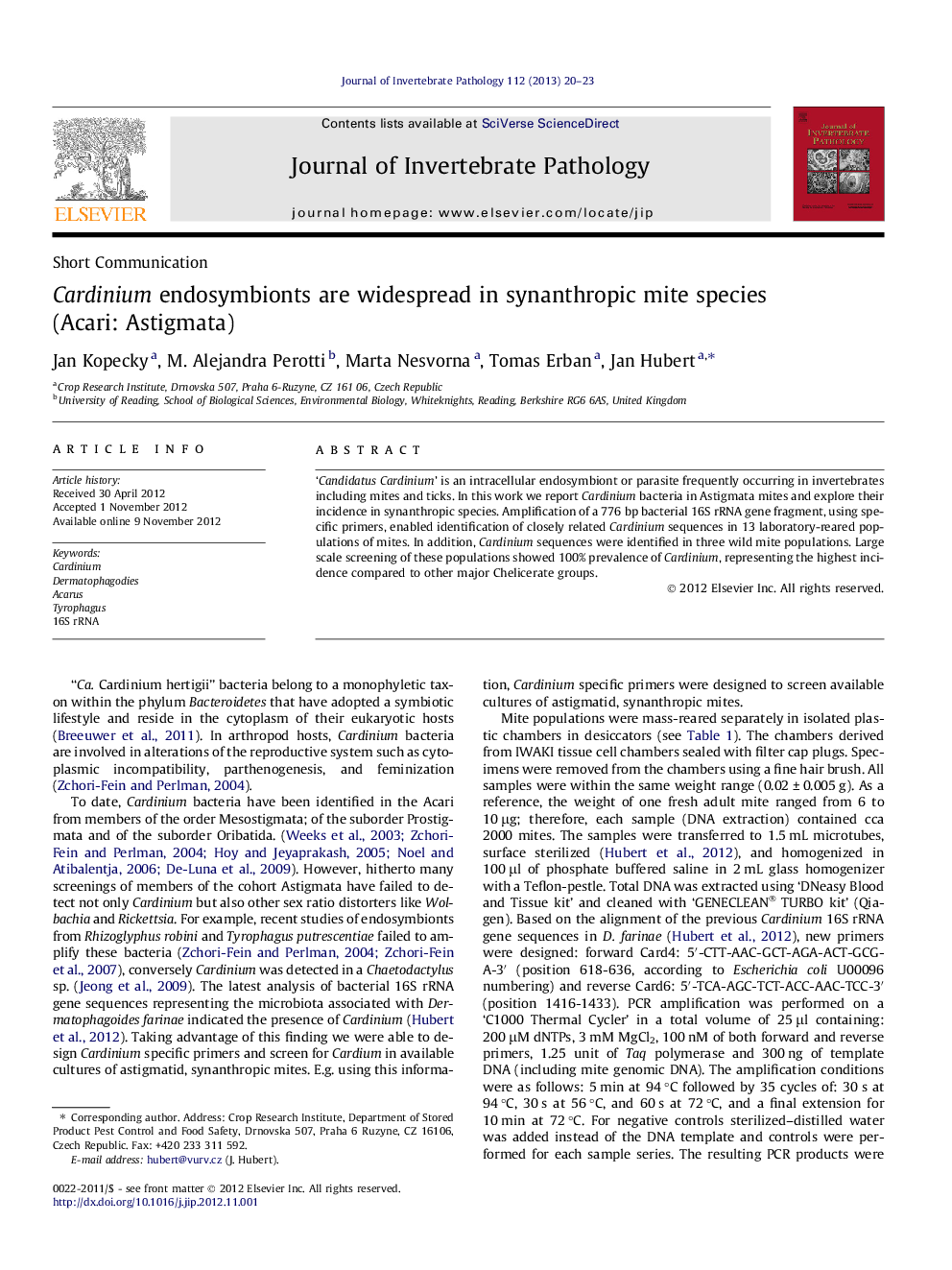| Article ID | Journal | Published Year | Pages | File Type |
|---|---|---|---|---|
| 6389718 | Journal of Invertebrate Pathology | 2013 | 4 Pages |
'Candidatus Cardinium' is an intracellular endosymbiont or parasite frequently occurring in invertebrates including mites and ticks. In this work we report Cardinium bacteria in Astigmata mites and explore their incidence in synanthropic species. Amplification of a 776Â bp bacterial 16S rRNA gene fragment, using specific primers, enabled identification of closely related Cardinium sequences in 13 laboratory-reared populations of mites. In addition, Cardinium sequences were identified in three wild mite populations. Large scale screening of these populations showed 100% prevalence of Cardinium, representing the highest incidence compared to other major Chelicerate groups.
Graphical abstractPhylogenetic analysis of clones belonging to 'Candidatus Cardinium' together with the reference sequences (Chang et al., 2010) available in public databases. Phylogeny was inferred by Bayesian analysis of 162 cloned sequences of the 16S rRNA gene from this study and 42 reference sequences of their closest relatives. Branch lengths correspond to mean posterior estimates of evolutionary distances (scale bar, 0.5). Branch labels indicate the Bayesian posterior probability and supporting bootstrap values from maximum-likelihood and neighbor-joining analyses. The phylograms were outgrouped using the E. coli sequence U00096.Download full-size imageHighlights⺠The presence of 'Candidatus Cardinium' bacteria within Astigmata are reported. ⺠Closely related Cardinium 16S sequences were found in 13 synanthropic mite species. ⺠Cardinium were also confirmed in wild populations of synanthropic mites.
